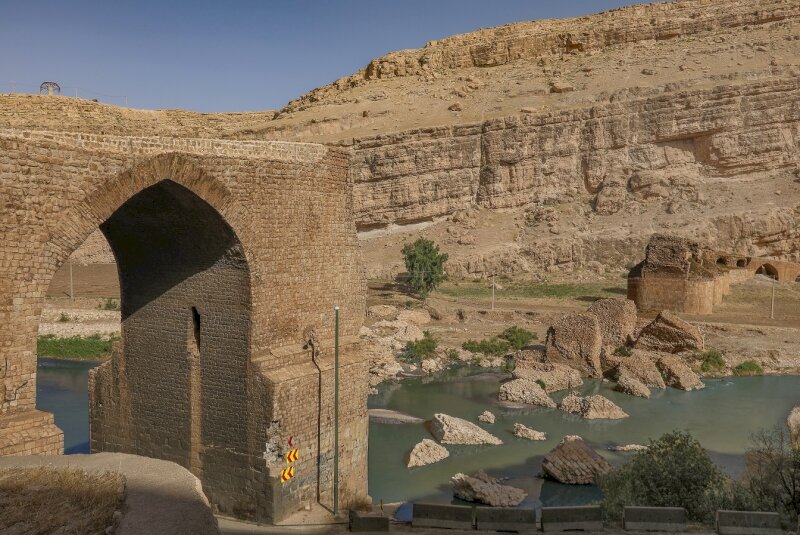Restoration work begins on Sassanid arch bridge

TEHRAN – A restoration project has recently been commenced on the ruins of a Sassanid-era (224 CE to 651) arch bridge in the western Lorestan province.
The project is aimed to strengthen Pol-e Dokhtar and repair damaged parts, the provincial tourism chief said on Monday.
Traditional materials and methods are being used for the restoration project, according to international standards, Seyyed Amin Qasemi added.
With 270 meters long, Pol-e Dokhtar (literally meaning Girl Bridge) was built on the remains of an ancient structure dating back to the Achaemenid era (c. 550 – 330 BC).
Only one 18-meter-high arch has remained from the original structure, which was a passage between two ancient cities of Shapur Khast and Jundi Shapur.
Inscribed on the National Heritage list, the bridge has been restored several times over the years.
Lorestan, which is a region of raw beauty, was inhabited by Iranian Indo-European peoples, including the Medes, c. 1000 BC. Cimmerians and Scythians intermittently ruled the region from about 700 to 625 BC. The Luristan Bronzes noted for their eclectic array of Assyrian, Babylonian, and Iranian artistic motifs, date from this turbulent period.
Lorestan was incorporated into the growing Achaemenid Empire in about 540 BC and successively was part of the Seleucid, Parthian, and Sassanid dynasties.
ABU/AFM
Leave a Comment